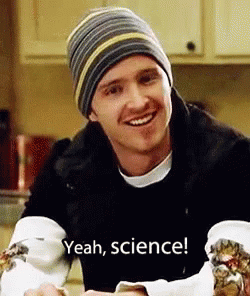
Posted on 07/16/2025 5:50:49 AM PDT by Red Badger
The study showed the virus already had three crucial ways of adapting to humans right when the pandemic started.

Emergency hospital in Zurich's Tonhalle during the so-called “Spanish flu” in November 1918.
Schweizerisches Nationalmuseum, Inventarnummer LM-102737.46
===========================================================================
Scientists have “reconstructed” the genome of the 1918–1920 influenza virus, using a sample from a patient in Switzerland.
Researchers from the universities of Basel and Zurich studied a sample from the University of Zurich’s Medical Collection, taken from an 18-year-old who died in July 1918.
The study showed the virus already had three crucial ways of adapting to humans when the pandemic started.
“This is the first time we’ve had access to an influenza genome from the 1918–1920 pandemic in Switzerland. It opens up new insights into the dynamics of how the virus adapted in Europe at the start of the pandemic,” said Verena Schünemann, one of the study authors.
Decoding the virus
The Spanish Flu, or the 1918–1920 influenza pandemic, was one of history’s deadliest, killing tens of millions worldwide and leaving a lasting impact.
The H1N1 influenza A virus was responsible for the pandemic, which spread globally from February 1918 to April 1920. The pandemic occurred in multiple waves, with the second wave in the fall of 1918 being the most severe and deadly.
It claimed an estimated 20 to 100 million lives worldwide.
While the Spanish Flu profoundly impacted humanity, its specific viral evolution remained largely a mystery for decades.
The recent COVID-19 pandemic greatly benefited from modern scientific techniques, allowing for a much more rapid and detailed understanding of the SARS-CoV-2 virus and its variants.
In today’s time, new viral epidemics present significant challenges to global public health.
To effectively counter these threats, it’s important to understand how viruses evolve and to apply lessons learned from past pandemics.
That’s exactly what an international team of researchers from the Universities of Basel and Zurich has achieved.
Researchers successfully decoded the genome of the 1918 influenza virus by utilizing an over 100-year-old formalin-fixed specimen from a patient in Zurich, who died during the pandemic’s first wave and underwent autopsy in July 1918.
A formalin-fixed specimen is a biological sample preserved with a formaldehyde solution to stop decay and keep its cellular structure intact.
VIDEO AT LINK...............
Mutations in virus
The team compared the newly sequenced Swiss genome with existing influenza virus genomes from Germany and North America.
The researchers discovered that the Swiss strain of the 1918 flu already possessed three human-adapted features at the pandemic’s outset, which remained present in the virus throughout its duration.
For example, two mutations helped the virus resist the body’s natural antiviral defenses, which are crucial for stopping animal viruses from infecting humans.
The virus also developed a third mutation that enhanced its ability to connect with human cell receptors, increasing its resilience and infectivity.
This feat wasn’t easy. As compared to stable DNA, influenza viruses carry their genetic information as RNA, which degrades much faster over time.
“Ancient RNA is only preserved over long periods under very specific conditions. That’s why we developed a new method to improve our ability to recover ancient RNA fragments from such specimens,” said Christian Urban, the study’s first author from UZH.
This technique now opens the door to studying even more historical RNA viruses.
This incredible research highlights the invaluable role of medical collections worldwide.
The insights gained from this 1918 Swiss virus genome will help us build better models, establish evidence-based foundations, and ultimately, be better prepared for the next global health challenge.
Spanish Flu Ping!.....................
How? they never address the most important point here. I read that the Spanish Flu virus was already studied. I believe from frozen interred bodies from an Alaskan "tribe" in Alaska's permafrost.
There were apparently several variants as they mutated and evolved..............
This will really help with gain-of-function research, too.
I understand that, what are we prepared to do about it I wonder, so viruses mutate, got it. I think we already knew that.
These insights will really help Dr. Fauci and his Chicom friends with their “gain of function” research.
With this new knowledge, population reduction will be easier in the future.
1Old Pro wrote: “How? they never address the most important point here. I read that the Spanish Flu virus was already studied. I believe from frozen interred bodies from an Alaskan “tribe” in Alaska’s permafrost.”
Correct. However, the virus quickly mutated. There was no one variant since it changed quickly. Comparing samples from multiple locations allows identification and tracking of the changes.
FWIW, one of my grandmothers died from the Spanish Flu in 1920.
The Demoncrats have invented a new bioweapon in months. They’re getting behind.
have = haven’t
later
If they can develop a timeline, they can perhaps predict which way a current virus will go and how fast...................
Just what we need—another petri dish of that falling onto the floor and getting tracked into the break room!
I'm all for it. I guess it's called science.

Better dying thru biology!............
Rapid and detailed understanding? No, they're still covering up how they created it.
Was not the Swine Flu the same thing? I remember the panic of 1976 and the vaccines. More people died of heart attacks standing in line for the shot than died of the flu.
Also, at that time a doctor said he had no fear of the flu as most of the people who died of the original Spanish Flu died of pneumonia and today we have antibiotics for that.
Maybe the can use AI instead of their gain of function research, and develop effective models instead of risking lab leaks.
Disclaimer: Opinions posted on Free Republic are those of the individual posters and do not necessarily represent the opinion of Free Republic or its management. All materials posted herein are protected by copyright law and the exemption for fair use of copyrighted works.